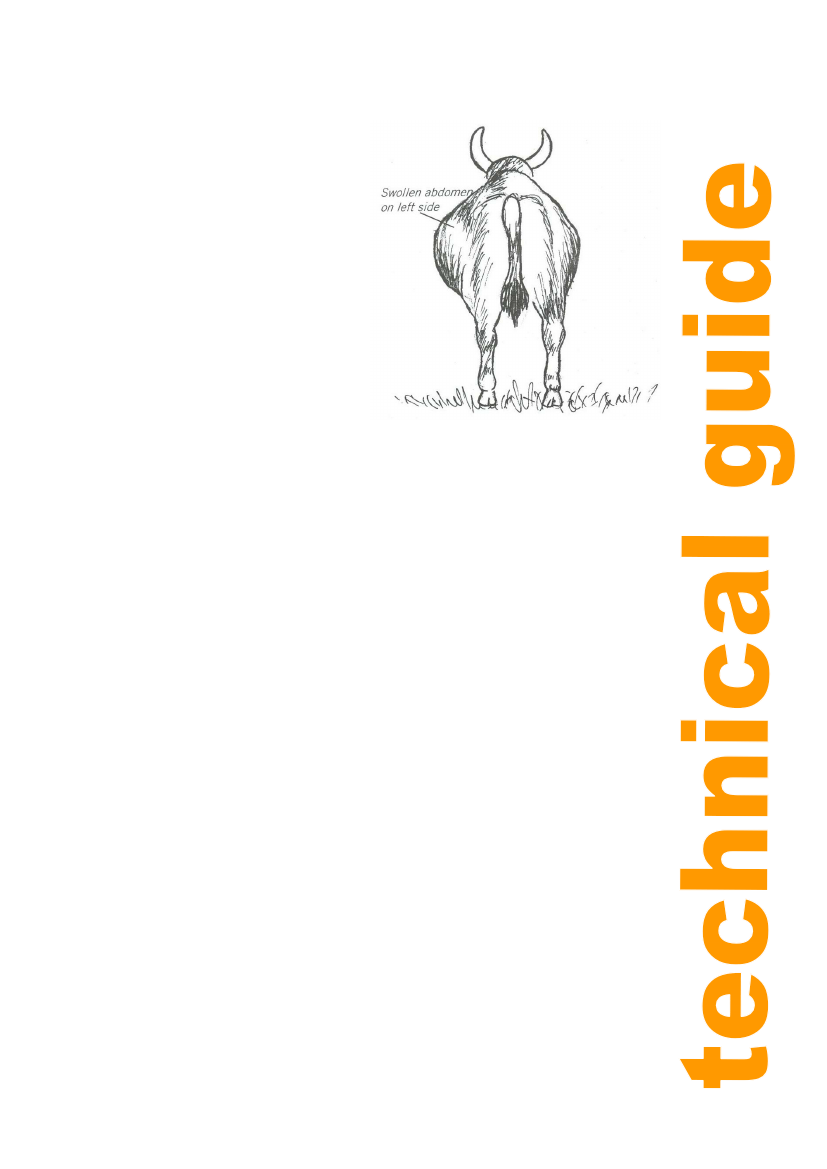
Beef cattle production and management
Practical Action
Bloat/Ruminal Tympany (Chirwere Chekufufutirwa)
Bloat is an overdistention of the rumen and
reticulum with the gases of fermentation, either
in the form of a persistent foam mixed with the
ruminal contents-called primary or frothy bloat,
or in the form of free gas separated from the
ingesta-called secondary or free-gas bloat. The
susceptibility of individual cattle to bloat varies
and is genetically determined.
Occurrence
Frothy bloat occurs when animals consume a
lot of wet pasture especially with legumes in it
or feeds that ferment easily that they are not
used to.
Whereas free gas bloat occurs when the
oesophagus is blocked or when the cattle have a
condition that causes paralysis, for example
tetanus.
Clinical Signs
The following signs are observed:
Enlarged abdomen especially on the left side
The affected cattle have difficulty in breathing which can be accompanied by mouth
breathing, tongue protruding out, extension of the head and frequent urination.
The animal does not eat
Some vomit and develop a mild diarrhoea
Some have a greenish froth coming out of their nostriIs
If bloat worsens animal collapses and dies
Post-mortem
Postmortem findings are characteristic. Bleedings in the lymph nodes of the head and neck,
heart, and upper respiratory tract are marked. The lungs are compressed and bleedings may be
present. The first part of the gullet is congested and bleedings are present, but the thoracic
portion of the gullet is pale-the demarcation known as the "bloat line" of the gullet. The rumen is
distended, but the contents usually are much less frothy than before death. The liver is pale due
to expulsion of blood from the organ.
Treatment
Frothy bloat is treated using anti-foaming agents, for example vegetable oil/ mineral oil at a dose
250-500ml or commercially prepared agents, for example Bloatguard", Skilled personnel can do
a rumenotomy, which is an operation to remove the contents in the rumen.
Free gas bloat is relieved by passing a stomach tube or through the use of a trochar and cannula.
Prevention
Bloat can be prevented by feeding cattle hay/dry grass before they are turned out onto pastures
that cause bloat. Also animals can be given antifoaming agents before they go onto pastures at a
dosage of 60-120ml/head/day.
Dermatophytosis/Ringworm (Zvisasa)
Ringworm is an infection of skin, nails and hairs caused by fungi. Humans can get infection from
sick animals if they get into contact with them. The infection is more common in young and very
old cattle and longhaired breeds of cattle. Ringworm as a herd health problem is more common
in winter.
45